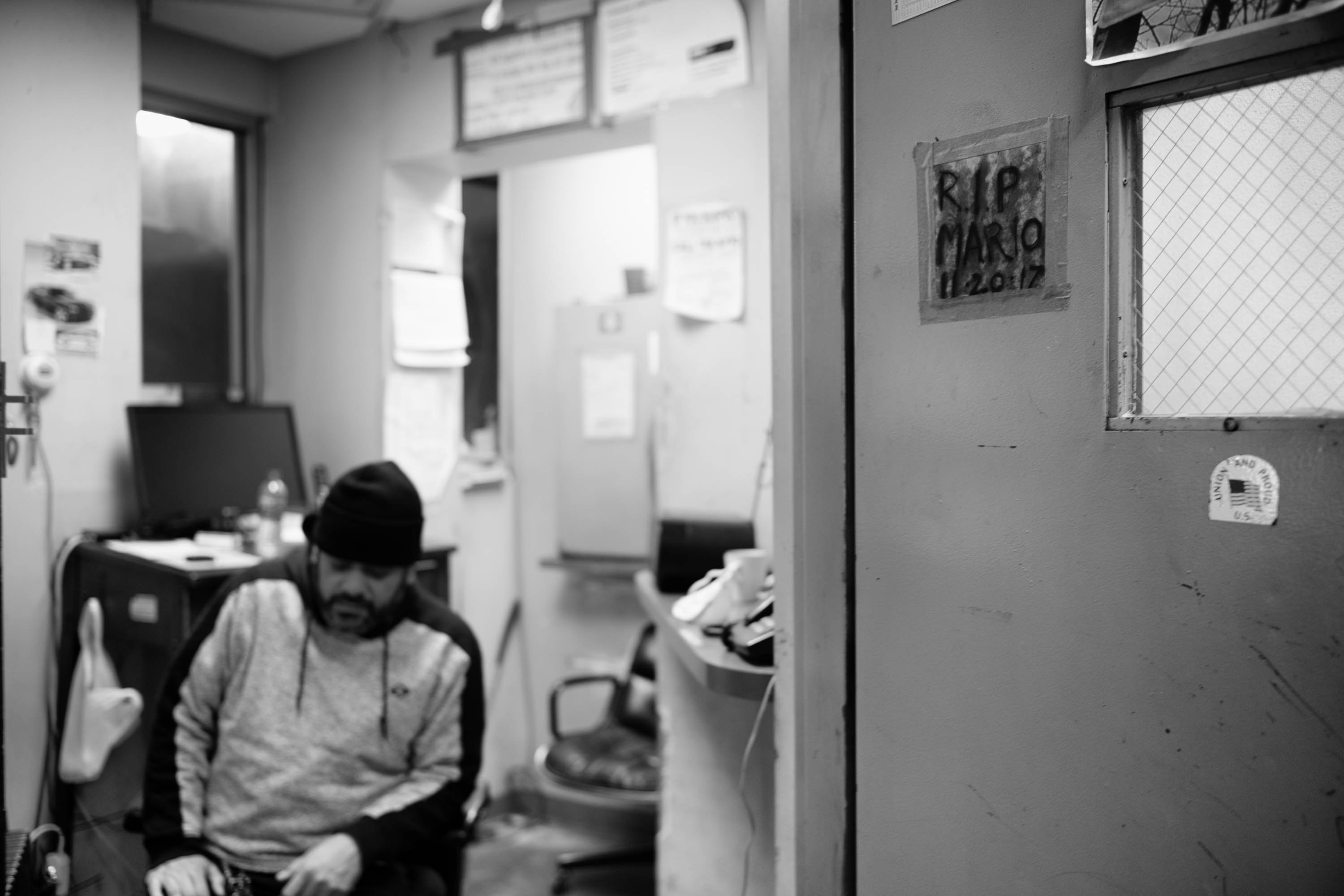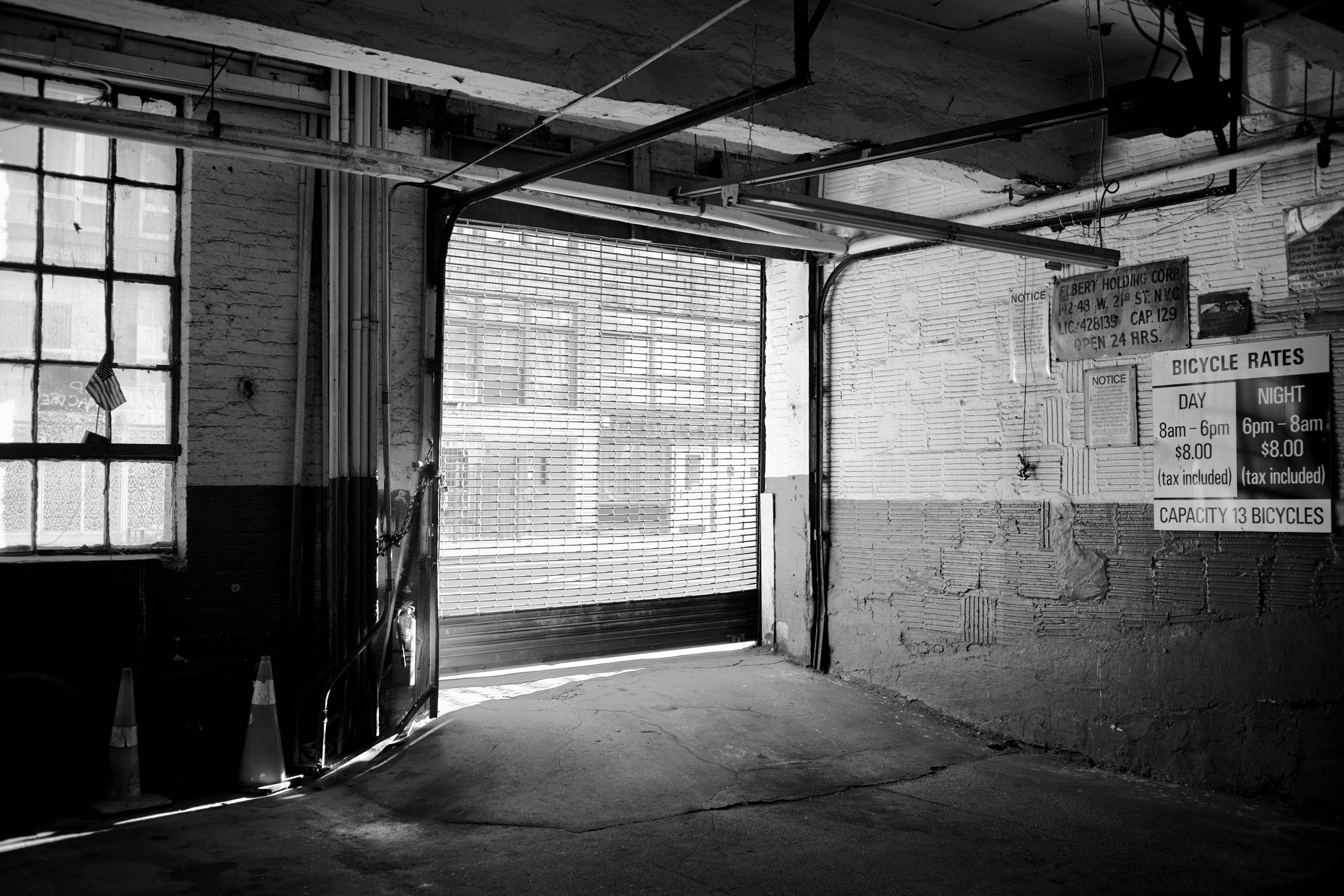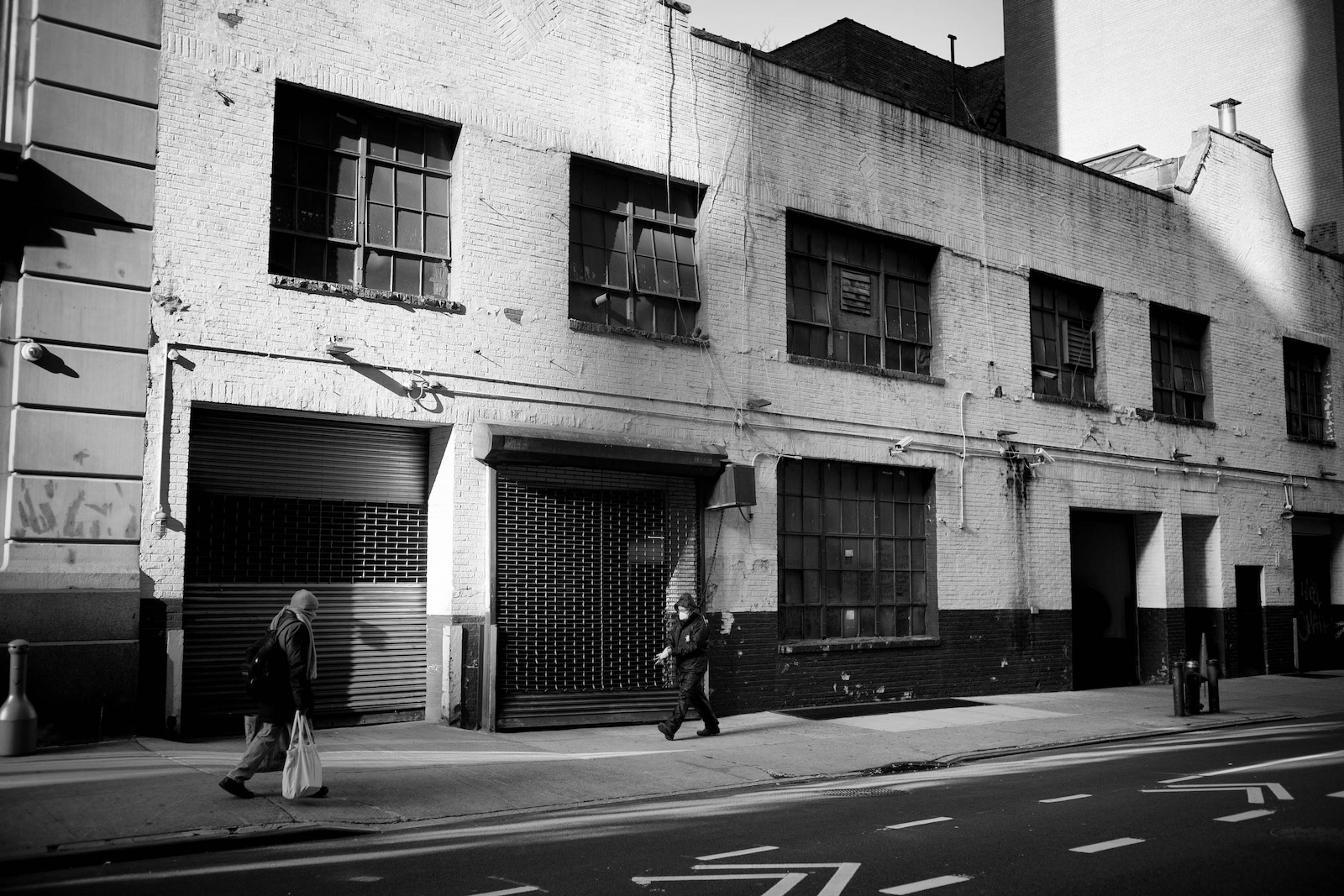The dusty window of Ann Service Corp., which occupies a ninety-year-old taxi garage in Chelsea, in downtown Manhattan, serves as a makeshift memorial to the company’s drivers who have died on and off the job, their names traced onto the panes with a finger. Soon the fragile record will be gone: the garage closed for good in April. Economically battered by the impact of customers lost to ride-sharing apps and by the corruption among industry leaders that has stricken the taxi business citywide, Ann Service Corp. was already limping along; the coronavirus pandemic was the final straw.
Erick Castro worked at Ann Service, which was founded in 1952, for more than half of the company’s long life. Born and raised in the Lower East Side, he started coming to the garage in 1976 as a kid in his free time after school, helping his dad service cabs. When his father retired, then working as a parking attendant, Castro was able to take over his unionized position, making sure that cabs were in perfect condition before they embarked on another twelve-hour shift.
He remembers the heyday of the taxi industry, when yellow cabs had little competition, and the garage housed a hundred and twenty cars during the day and another hundred and twenty at night.
“People from all over the world,” he said in a phone conversation. “I met people from Pakistan, I met people from Iran, I met people from Santo Domingo, I met people from Russia; I met all nationalities in that garage.”
But now, he said, “Everybody is gone.”
Even if the garage window is eventually wiped clean, or smashed in a demolition, Castro carries a mental list of the drivers he has known who have passed away, many lost to the dangers and anxieties of the job.
First was his father’s own partner. A cab driver himself at one point, Castro’s dad would drive during the day, and his partner would take over for the night shift. One night, the man was murdered in a holdup.
“They shot his partner in the head, in the cab,” Castro remembered. “They found his body in Jamaica, Queens, buried in the snow—there was a big snowstorm then. They found the car in the Lower East Side, with all his blood in it, and two bullets shot through the roof.”
Others died from natural causes, but Castro believes the strain of the work was a factor.
“One caught a heart attack right in front of the garage, inside his cab,” he said. “He’d finished a twelve-hour shift. We thought he was sleeping, and when we went to wake him up, he was dead.” He says at least two other drivers at the garage have died from heart attacks, from “the anxiety, the stress.”
Drivers also always faced harassment from cops, who are quick to issue tickets but are not interested in helping when passengers evade fares for long trips—something that Castro says happened as often as three or four times a week. Then there was the risk of violence from customers or assailants on the streets. One time, several years ago, a driver was beaten and robbed by several men who threw a garbage can in front of his cab, forcing him to get out to move it. He was permanently impaired by the assault. “He’s in therapy right now, he’s going through surgery,” said Castro. “He had brain damage because they cracked his skull.”
But the biggest worry for cab drivers is the inability to make ends meet.
The taxi industry has been brutally crunched on two sides—from skyrocketing operating costs, on the one hand, and a sharp decline in business, on the other. Investing in a medallion, the city-issued permit necessary to drive a cab, had long been considered a guarantee of steady work and a safe path to retirement for drivers, who are self-employed and do not receive benefits. A limited number of medallions are issued, so they could be relied upon to appreciate over time and could be passed on to a friend or relative or sold.
This had been a stable, gradual process—until taxi industry leaders started turning medallions into investment assets, artificially inflating their prices: between 2002 and 2014, they quintupled in price, from around $200,000 to over $1 million. Using many of the same practices that led to the 2008 financial crisis, banks and private lenders began offering predatory loans to drivers, many of whom were immigrants hampered by limited English as a second language. The New York Times, in a long series of reports on the fiasco, described how one driver, who was making $30,000 per year, had unwittingly signed a contract for a loan of $1.7 million.
Advertisement
The bubble burst in late 2014. The value of medallions crashed, leaving drivers with no savings and deep in debt. A rash of suicides among them has followed. At the same time, those already struggling to repay loans found their income drastically reduced by competition from Uber and other ridesharing companies. Critics of the taxi industry argue that ridesharing has been able to improve ride access in the outer boroughs and in low-income neighborhoods. The taxi industry in New York also has a long history of discriminating against black riders by refusing service. Bhairavi Desai, the executive director of the New York Taxi Workers Alliance, a cab union with 21,000 members, argues that Uber has cynically exploited these grievances to fight regulations by “creating this narrative that civil rights and economic justice for workers are somehow not interrelated.”
“Once Uber got into the picture, it was over,” said Castro. “The cab industry went dead, completely dead.”
A number of Castro’s friends began working for Uber, but he noticed that many of them eventually grew disillusioned and tried to return to yellow cab-driving.
“I asked them: What’s going on, you said Uber was better?” he related. “They said: No, it’s not better, they make us work more hours, and they’re paying us less than the yellow cabs.”
Not that there was much of an industry to return to by that point. The NYTWA succeeding in winning a temporary cap on the number of rideshares, halting the growth of Uber and Lyft in the city. But the number of existing ridesharing vehicles was already so high that this degree of regulation came too late to resuscitate the ailing cab trade.
And then came the pandemic. Thousands of drivers have stopped working, finding it fruitless to cruise for hours along empty streets searching for a fare. The Metropolitan Taxicab Board of Trade, the city’s largest taxi group, has estimated that the number of cab rides has dropped from around 506,000 a week at the beginning of March to roughly 28,500 in the first week of May. The majority of drivers are now struggling to make rent or even put food on the table.
At Ann Service Corp., private parking had been paying for part of the garage’s costs. But Castro said that even before the pandemic, business had been declining. As well-to-do residents cleared out of the city, the garage emptied out.
“Everybody just took their cars and left.” Castro watched as the number of monthly parkers fell from more than two dozen to just four.
Yellow cabs have been a fixture of city life for a century, immortalized in films and on television as a signature of New York. Though never an easy job, cab-driving was also once a path to middle-class security for generations of immigrants and working-class people. Now, exploited and abandoned, drivers are chained to their cars by debt or a sense that they have given too many years of their lives to switch paths. The pandemic has only made a situation that was increasingly untenable finally impossible.
Castro is left shaking his head, wondering why one of the city’s most faithful and enduring modes of transportation has been the one to go.
“Back when I first started in the Seventies, there were very few limousines, very few gypsy cabs, there was none of that,” he recalled, using a term common in the trade for unlicensed cabs. “All that’s all over the place is just cabs. My way of thinking is if the yellow cabs were there from the beginning, since back in the day before all these private companies got into the picture, why is it only the yellow cabs [going out of business]? The cabs were there first.”






